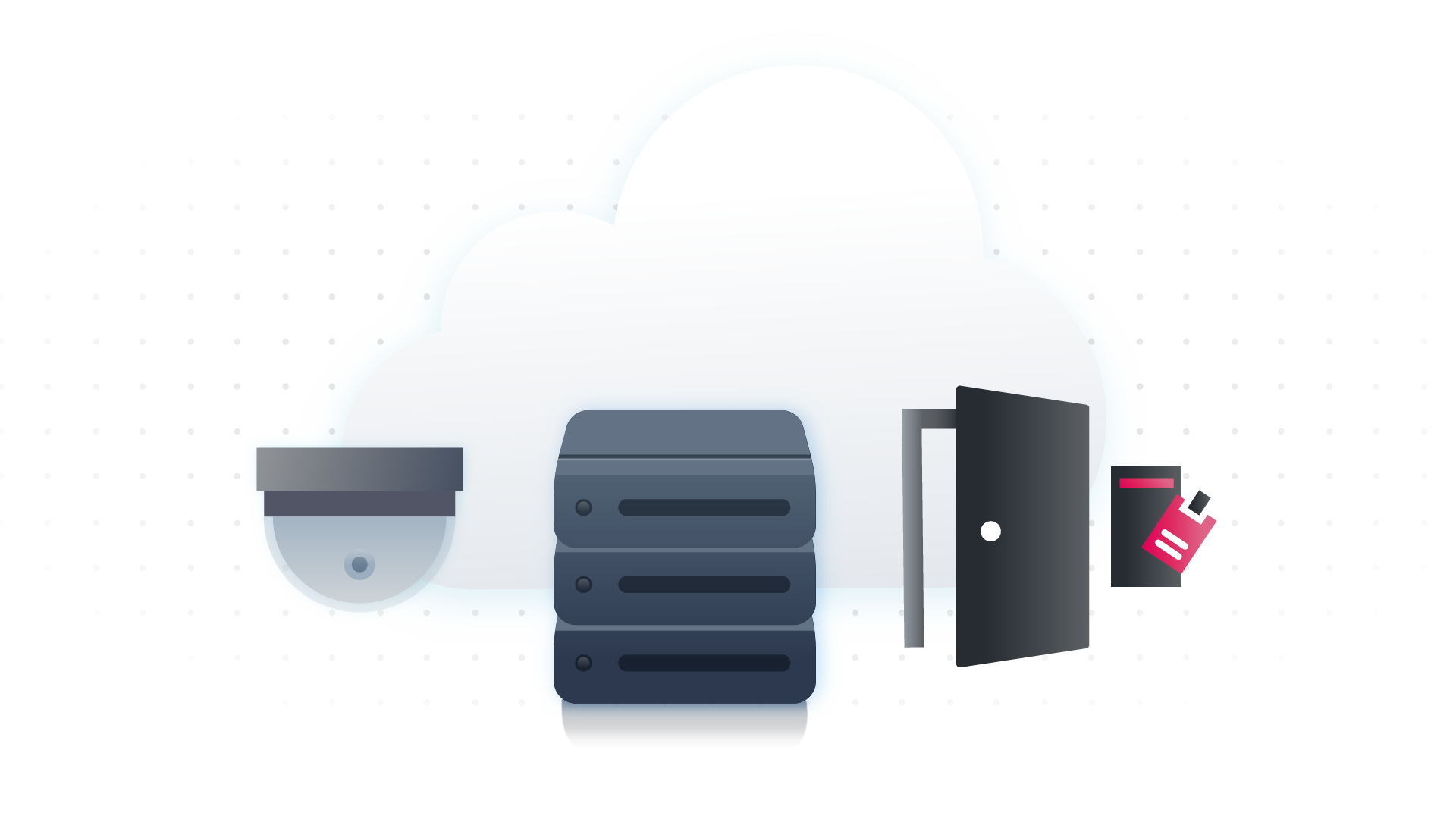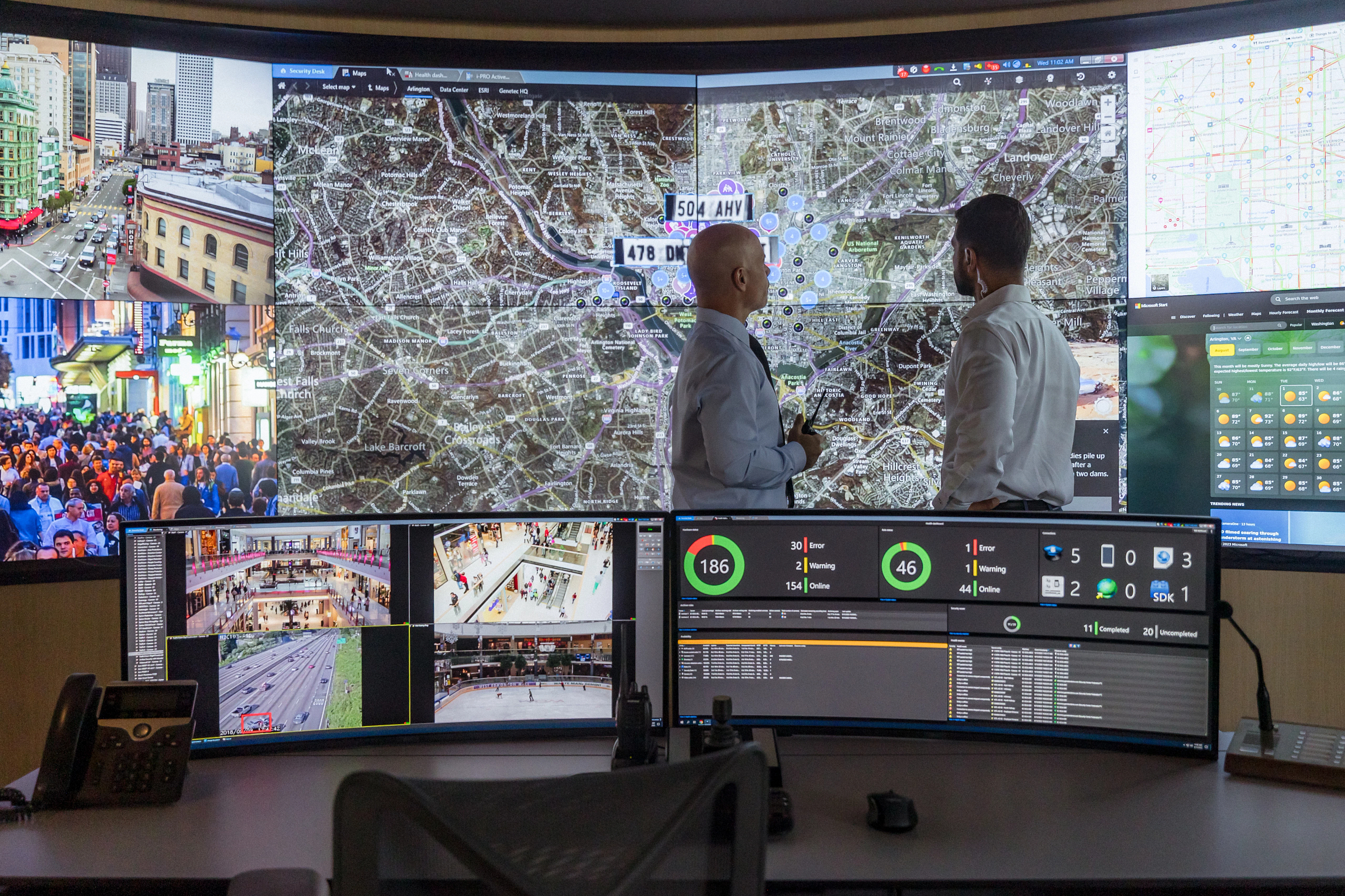What is SaaS, PSaaS, VSaaS, and ACaaS in physical security?
Software as a service (SaaS), physical security as a service (PSaaS), video surveillance as a service (VSaaS), and access control as a service (ACaaS) are popular cloud service offerings used in the physical security industry.

Learn about each, including how cloud-managed appliances provide an easy, plug-and-play connection to cloud-native security software and extra on-site storage and processing.
BLOG
What is a SaaS solution?
SaaS, or software as a service, is a software licensing and delivery cloud model in which software is licensed on a subscription basis and is centrally hosted. SaaS is also often described as on-demand software, web-based software, or web-hosted software.
You can easily access a SaaS application via the internet using a web browser or mobile app—so there’s nothing to install or update. The vendor takes full responsibility for all the infrastructure and back-end management involved in delivering a SaaS solution, from servers and storage to networking and updates.
This makes it an ideal delivery model for all kinds of business applications. You can simply create an account, pay the subscription fee, and begin using a SaaS solution.
For example, many organizations today use various SaaS applications to email and manage calendars, easily store and share files, handle graphic design or video editing jobs, oversee marketing resources and projects, or increase productivity and workflows.
There are a few common SaaS solutions in the physical security industry. These include unified physical security, video management, and access control. Cloud-managed appliances offer cloud connections from the edge, to facilitate various types of requirements and applications.
What are the benefits of a SaaS model in physical security?
The as-a-service model differs from traditional on-premises infrastructure, mainly by removing the need to procure, install, manage, and maintain various hardware assets such as servers. This comes with many benefits, including an increased level of agility, accessibility, and cybersecurity.
Organizations that choose a SaaS model can get systems up and running quickly. Cloud-connected cameras and readers or cloud-managed appliances easily connect to a SaaS solution over the internet. You can simply log into the web-based application to start viewing cameras, manage access control activity, and handle all your security tasks.
Since your provider can automatically push fixes and updates to a SaaS solution, there’s less overhead and resources needed to maintain your security system. You’ll also receive the latest cybersecurity features and continuous access to innovative product enhancements as they become available.
While SaaS solutions can be deployed anywhere, there are specific situations that make SaaS a particularly good fit. These include the following business or site criteria:
- Want to transition deployments to the cloud or have a cloud-first policy
- Want the convenience of automatic updates and access to innovation
- Don’t have space for hardware or want to lower hardware footprint
- Don’t want to maintain hardware or don’t have the resources to do it
- Want to move to or use OpEx budget to fund security investments
- Need system flexibility and scalability to quickly grow and pivot
- Want to easily extend system access to various users using web clients or apps
What does PSaaS mean?
PSaaS, or physical security as a service, is a comprehensive physical security solution that’s delivered as a security as a service model. This means that you can unify access control, video management, forensic search, intrusion monitoring, automation, and many other advanced security capabilities. A PSaaS solution also comes packed with enterprise-grade features all within an interconnected SaaS experience.

What makes a PSaaS solution unique is that it delivers unified physical security at its core. Instead of dealing with or managing different standalone, cloud-based video or access control systems, there’s more forethought and simplicity at play. A PSaaS solution combines the benefits of cloud and the as-a-service model across various security applications, all into one. Organizations can start with a video surveillance application, and add access control, intrusion, and other systems later on. Everything is accessible and manageable within one easy-to-use application.
PSaaS also helps remove the burden of maintaining various security systems, so you can prioritize other operational and business objectives.
By leaving system updates and maintenance to your service provider, you can have lower upfront expenses and make costs more predictable. Your team members will also have more time to focus on other critical tasks.
Choosing an open and flexible PSaaS solution can provide your organization with an added level of adaptability. You can choose the devices that best suit your application, or use cloud-managed appliances to connect any existing security systems to a unified PSaaS solution.
A flexible PSaaS architecture supports a hybrid physical security deployment, where some sites are in the cloud and others are hosted on-premises. This allows organizations to focus on specific site, industry, or regional requirements and select the best solution for each.
What are the top benefits of PSaaS?
See it all in one place |
Get video, access control, intrusion, communications, and other core capabilities in one cloud platform. With built-in analytics, automation, maps, reporting, and more you can easily monitor, respond, and keep track of all security operations.
Get systems up and running fast |
Grow and pivot with more agility and spin up new sites anywhere in the world. Quickly scale users, storage, number of connected devices, and more through the cloud without impacting performance or resources.
Manage security from anywhere |
Handle all tasks remotely, whether in a command center or at office desks using web or mobile apps. Streamline device enrollment, configuration, and multi-site monitoring.
Boost cybersecurity and resilience |
Reduce time spent on maintenance and enhance cyber resilience with automated updates and fixes, all pushed from the cloud. Get added peace of mind with advanced threat detection from the cloud software provider, as well as regular third-party audits to ensure regulatory compliance.
Get immediate access to innovation |
Receive continuous access to the latest innovations and new product releases. Try new capabilities and extract more value with a PSaaS solution that’s always evolving.
Transition to cloud over time |
Move to cloud and scale your physical security deployment at your own pace, while protecting past investments. Add direct-to-cloud devices, use current hardware, and connect on-premises sites, managing everything from one intuitive cloud interface.
What is VSaaS?
VSaaS, or video surveillance as a service, is a cloud-native video surveillance solution that’s offered as a subscription-based service by a technology vendor. A VSaaS solution has been engineered and optimized to harness the power of the cloud, echoing all the benefits of a SaaS model.
Though a VSaaS can connect to direct-to-cloud cameras and devices for a full cloud deployment, there are other options. For instance, using cloud-managed appliances, an organization can bring existing cameras into a VSaaS solution. This hybrid deployment benefits customers who want to transition to the cloud slowly and aren’t ready to swap out all technology investments just yet.
What are the benefits of a VSaaS solution?
The benefits of VSaaS include fast deployment, web-based video management, flexible cloud storage, automated updates, and massive scalability.
Much like other SaaS solutions, you can get many powerful video-specific capabilities built into VSaaS. Forensic search, video anonymization, collaboration and sharing capabilities, and data protection and redundancy features are a few examples. These allow operators to work faster and smarter when monitoring video, handling investigations, or responding to incidents.
BLOG
What is ACaaS?
ACaaS, or access control as a service, is a cloud-native physical access control solution that’s delivered as a subscription-based service by a technology provider.
Using cloud-managed intelligent controllers and appliances, you can easily connect various access readers and devices to the ACaaS solution. This streamlines the entire deployment process and makes remote management of credentials and cardholders a breeze, no matter where you’re located.
What are the benefits of an ACaaS solution?
The benefits of an ACaaS solution include easy enrollment and management of access control appliances, remote building access monitoring and lockdown, continuous updates and innovation, robust scalability, and enhanced cybersecurity. There’s also less room for manual errors because systems are always automatically synchronized. This ensures that access rights are updated and assigned without operator intervention based on security policies.
With a modern ACaaS solution, you can get enterprise-grade features including physical identity, access and visitor management, occupancy tracking, and third-party integrations out-of-the-box.
Using these built-in tools, users can easily monitor door and cardholder activity, automate access control reporting and audits, strengthen organizational compliance, simplify the employee and visitor experience, and much more.
BLOG
What are cloud-managed devices?
Cloud-managed appliances are purpose-built devices managed remotely via the cloud. They easily connect to cloud-based or cloud-native software while providing additional processing and storage at the edge.
Cloud-managed appliances can support both video surveillance and access control installations, as well as intrusion and communications and other physical security applications. And since these devices are plug-and-play, installation is quick and straightforward.
In many cases, cloud-managed appliances will facilitate a hybrid-cloud deployment. That’s because they act as a bridge to the cloud, linking existing, non-cloud devices to a SaaS solution. That means you can keep investments and manage your system, maintenance, and cybersecurity all from a centralized SaaS solution.
Cloud-managed devices also get automatic updates and fixes pushed from the cloud. This ensures that devices are always optimized and secured, and there’s less on-site work needed.
Adding cloud-managed appliances also provides enhanced redundancy, bandwidth optimization, and additional processing power at the edge. So no matter the constraints or requirements, cloud-managed appliances can help optimize any installation.
BLOG
PSaaS, VSaaS, ACaaS, and hybrid-cloud deployments
By extending your capabilities to the cloud, you have the flexibility to choose between on-premises, cloud, or a hybrid physical security solution based on your unique requirements and applications. And with a SaaS delivery model, you can get constant access to new features and innovations faster, while benefitting from data protection, system flexibility, and cost savings.
Explore our cloud solutions:
- Security Center SaaS unified physical security as a service
- Video surveillance as a service
- Access control as a service
- Genetec Cloudlink™ 310 managed appliance
- Synergis™ Cloud Link intelligent PoE device
- Axis Powered by Genetec direct-to-cloud controller
